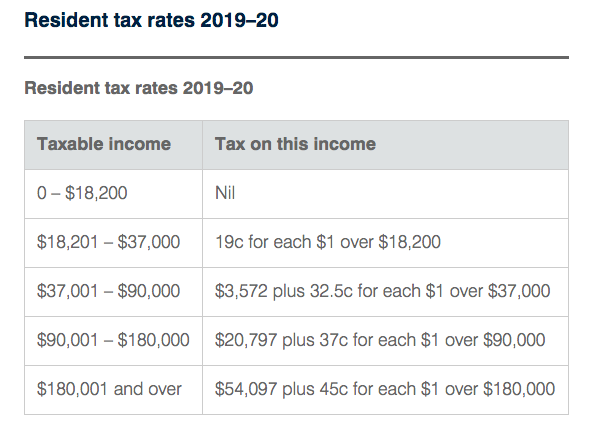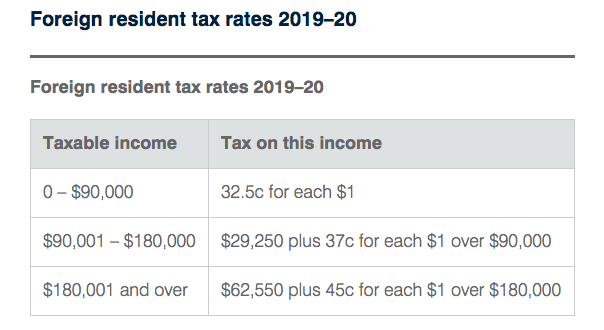
How much tax do I pay? It’s a question a lot of us who find ourselves working at home are asking.
If you are working from home and you are unsure as to how much tax you pay, or how much tax you can claim back, you have come to the right place. Here are the latest updates on how your tax payments and claims may change due to COVID-19.
How much tax do I pay?
For those who are still working despite coronavirus, the same tax arrangement still apply to you.
Here is a breakdown of the tax brackets for resident tax rates and foreign resident tax rates for 2019–2020.


It is also important to note government payments, including new coronavirus payments, are taxable and they must be declared on your tax return.
Payments that you must declare on your tax return include youth allowance, NewStart, JobSeeker, age pension, carer payments and Austudy.
If you are unsure as to whether payments you are receiving are taxable, you still need to declare them.
How much tax can I claim back?
How much tax you will be able to claim back while working from home will depend on a few variables, such as the equipment you require to work, phone and internet usage, cleaning costs and the total sum of your utility costs.
“As the COVID-19 situation develops, we understand you may now be working from home and may incur expenses you can claim at tax time,” says the Australian Taxation Office.
There are two ways that you calculate how much tax you can claim back while working from home:
- Shortcut method: You can take a “shortcut” and claim back 80 cents per hour of working. The ATO has released this shortcut method to simplify the process for workers who are new to working from home. This new procedure will run until June 30, 2020, and will then be reviewed depending on changes to working patterns. If you work an eight-hour day, this will amount to $6.40 per day.
- Fixed-rate method: You can claim a fixed rate of 52 cents an hour for “heating, cooling, lighting, cleaning and the decline in value of office furniture”, and then also calculate all of the expenses that are directly related to working from home, such as phone and internet expenses and the declining valuation of your personal equipment, such as computers and printers to the value of $300. If a piece of equipment cost $300 or under, you can claim for the full amount. If it cost over $300, you will need to work out the depreciation in value. If you work an eight-hour day, the fixed-rate tax back would equate to $4.16 a day, plus whatever expenses you have further calculated from your working day.
To claim work from home tax back, you must:
- have already spent the money
- have a record to prove it.
Whether you opt for the shortcut method or the fixed-rate method should depend on how much money you are spending on a weekly basis.
Think about how much money you spend on items outside of things like heating, lighting, cooling and equipment. If you are hit with a steep monthly phone or internet bill, or if you need to buy equipment to get your job done efficiently, factor these costs in.








Crikey is committed to hosting lively discussions. Help us keep the conversation useful, interesting and welcoming. We aim to publish comments quickly in the interest of promoting robust conversation, but we’re a small team and we deploy filters to protect against legal risk. Occasionally your comment may be held up while we review, but we’re working as fast as we can to keep the conversation rolling.
The Crikey comment section is members-only content. Please subscribe to leave a comment.
The Crikey comment section is members-only content. Please login to leave a comment.